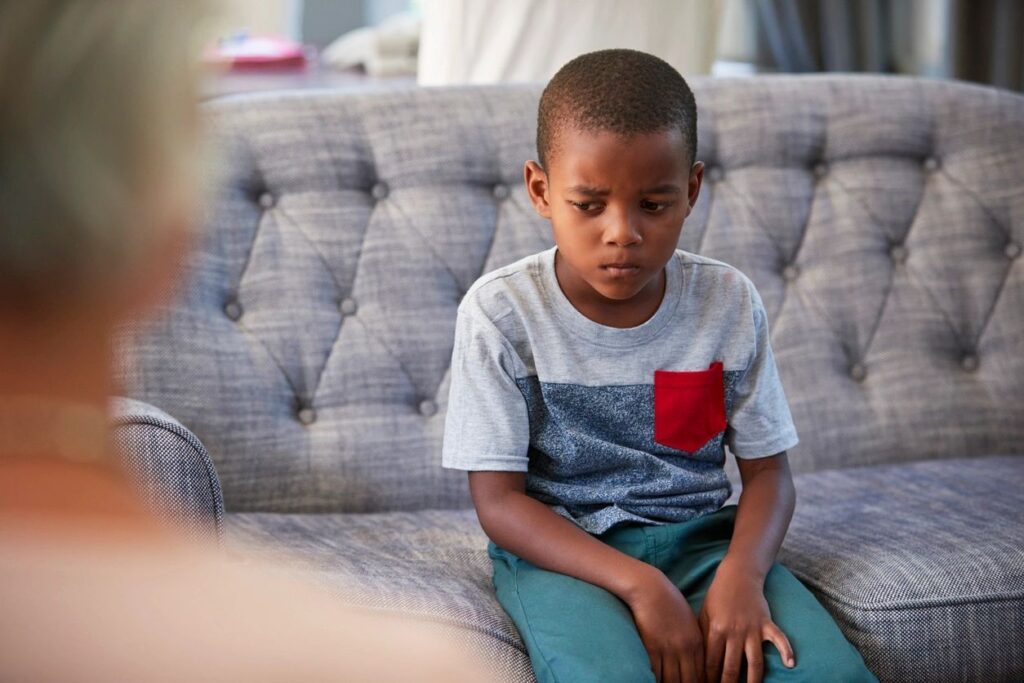
A Look at Attachment Styles
While “attachment theory” has been well known and respected in the psychology community for decades, the challenges of dating and finding love in a post-pandemic world have brought this concept into the limelight. We want to take a deep look at attachment theory, and the 4 attachment styles. We also want to look more deeply at how attachment styles relate to mental health and your overall wellness.
Dive In Deeper…

Understanding Attachment Styles: Navigating Relationships with Insight
Attachment styles serve as the foundation of how we relate to others and navigate the complexities of relationships. Rooted in early experiences, these styles profoundly shape our emotional responses and behaviors throughout life. Understanding attachment styles is key to unraveling the intricacies of human connection and fostering healthier relationships. Many people are now looking at how their attachment styles are affecting their mental health and their interaction with the world around them. In this article, we delve into the significance of attachment styles, their origins, development, impact on relationships, and strategies for personal growth and healing.
Origins of Attachment Theory
John Bowlby’s interest in attachment stemmed from his observations of children who had been separated from their primary caregivers during World War II. He noticed that these children often exhibited emotional and behavioral problems, leading him to hypothesize that a child’s relationship with their primary caregiver plays a pivotal role in their emotional and psychological development.
Bowlby’s initial work drew inspiration from ethology, the study of animal behavior, particularly the work of Konrad Lorenz on imprinting in ducklings. He believed that attachment behaviors in humans, such as crying, clinging, and seeking proximity to caregivers, serve an evolutionary function, ensuring the survival of the child by maintaining closeness to the caregiver.
Basics of Attachment Theory:
Attachment theory posits that children develop internal working models of relationships based on their early attachment experiences. These internal working models shape their expectations of relationships, beliefs about themselves and others, and strategies for relating to others throughout their lives.
Bowlby identified four primary attachment styles:
- Secure Attachment: Children with secure attachment feel safe, secure, and confident in their caregiver’s availability and responsiveness. They are more likely to explore their environment, develop positive self-esteem, and form secure relationships in adulthood.
- Anxious-Preoccupied Attachment: Children with anxious-preoccupied attachment are often anxious and uncertain about their caregiver’s availability and responsiveness. They may cling to their caregiver, seek excessive reassurance, and fear abandonment. As adults, they may exhibit clingy and demanding behavior in relationships, seeking constant validation and reassurance from their partners.
- Avoidant Attachment: Children with avoidant attachment learn to self-soothe and minimize their needs due to their caregiver’s unresponsiveness or rejection. They may appear independent and self-reliant but may struggle with intimacy and closeness in adult relationships, avoiding emotional vulnerability and maintaining emotional distance.
- Disorganized Attachment: Children with disorganized attachment experience inconsistent and often frightening or traumatic caregiving. They may exhibit a mix of avoidant and anxious behaviors, showing confusion and disorganization in their attachment behaviors. As adults, they may struggle with relationships, exhibit unresolved trauma, and have difficulty regulating emotions.
Implications of Attachment Styles on Daily Life
Attachment styles established in childhood have profound implications for emotional and psychological development throughout the lifespan. They influence how individuals perceive themselves and others, how they regulate emotions, and how they navigate relationships and social interactions.
Secure attachment serves as a protective factor, promoting resilience, emotional well-being, and healthy relationships. In contrast, insecure attachment styles, such as anxious-preoccupied, avoidant, and disorganized attachment, can contribute to emotional distress, relationship difficulties, and mental health issues.
Attachment theory offers a comprehensive framework for understanding the profound impact of early attachment experiences on emotional and psychological development. By recognizing and understanding our attachment styles, we can gain insight into our relationship patterns, emotional responses, and areas of vulnerability. This awareness can pave the way for healing, growth, and the development of more secure and fulfilling relationships throughout our lives.
“The propensity to make strong emotional bonds to particular individuals [is] a basic component of human nature”
John Bowlby
Author of “Attachment and Loss”

Deep Dive into Attachment Styles
Secure Attachment Style

Children with secure attachment feel safe, secure, and confident in their caregiver’s availability and responsiveness. They are more likely to explore their environment, develop positive self-esteem, and form secure relationships in adulthood.
Real-life Scenarios of Someone with a Secure Attachment Style
- Sarah: Sarah, a young girl with a secure attachment style, feels safe and loved by her parents. When she falls and hurts herself, she runs to her mom or dad for comfort. Her parents respond promptly and affectionately, reassuring her and tending to her needs. Sarah grows up feeling secure in her relationships and confident in her ability to rely on others.
- Alex: As a teenager, Alex has a close group of friends and a supportive family. He feels comfortable expressing his thoughts and feelings to others, knowing that he will be understood and accepted. Alex navigates the challenges of adolescence with resilience and seeks support from his loved ones when needed.
- Emily: In her adult life, Emily has a loving and supportive partner. They communicate openly, trust each other, and work together to solve problems. Emily feels secure in her relationship, knowing that she can depend on her partner and that they have each other’s best interests at heart.
Development of a Secure Attachment Style
A secure attachment style typically develops when a child consistently receives responsive, nurturing, and reliable care from their primary caregivers during early childhood. When caregivers are attuned to a child’s needs, provide comfort and support, and create a safe and predictable environment, the child learns to trust others, regulate their emotions, and develop a positive sense of self-worth. These early experiences form the foundation for secure attachment, which can influence relationships and emotional well-being throughout life.
Impact on Mental Health
Individuals with a secure attachment style often experience better mental health outcomes compared to those with insecure attachment styles. They tend to have higher self-esteem, better emotional regulation, and stronger social skills. Securely attached individuals are more resilient in the face of stress and adversity, as they have a reliable support system to turn to during challenging times. Their positive view of themselves and others fosters a sense of optimism and confidence, contributing to overall well-being.
Handling Relationships with a Secure Attachment Style
Someone with a secure attachment style typically approaches relationships with openness, trust, and empathy. They are comfortable expressing their needs and emotions, as well as listening to and validating their partner’s feelings. Communication is a cornerstone of their relationships, and they strive to maintain a balance between independence and closeness. They are supportive and reliable partners, valuing mutual respect and understanding. In conflicts, they tend to approach resolution collaboratively, seeking compromise and understanding rather than resorting to blame or avoidance. Overall, their secure attachment style fosters healthy, fulfilling relationships built on trust, mutual respect, and emotional intimacy.
“Personal power means being secure and confident inside yourself”
lev raphhael
Anxious-Preoccupied Attachment Style

Children with anxious-preoccupied attachment are often anxious and uncertain about their caregiver’s availability and responsiveness. They may cling to their caregiver, seek excessive reassurance, and fear abandonment. As adults, they may exhibit clingy and demanding behavior in relationships, seeking constant validation and reassurance from their partners.
Real-life Scenarios of Someone with an Anxious-Preoccupied Attachment Style
- Anna: Anna often finds herself worrying about her relationships. She frequently seeks reassurance from her partner, fearing they might leave her. When her partner doesn’t respond to her texts or calls promptly, she becomes anxious and assumes the worst, feeling unloved or abandoned.
- Mark: Mark tends to be overly sensitive to any signs of rejection or criticism from his friends or colleagues. He constantly seeks validation and approval from others, often putting their needs before his own to ensure they like him.
Development of Anxious-Preoccupied Attachment Style
Anxious-preoccupied attachment often develops in childhood when caregivers are inconsistently available or responsive to a child’s needs. A child may learn to associate love and attention with anxiety and uncertainty, leading them to develop a heightened sensitivity to perceived threats of abandonment or rejection. This early experience shapes their belief that they need to be constantly vigilant and seek reassurance to maintain relationships.
Impact on Mental Health
People with an anxious-preoccupied attachment style often experience higher levels of anxiety, insecurity, and low self-esteem. They may have difficulty regulating their emotions, leading to mood swings and heightened stress levels. Over time, this can contribute to the development of anxiety disorders, depression, and other mental health issues. Additionally, their fear of rejection and abandonment can lead to codependency, where they rely heavily on others for validation and struggle to maintain a sense of independence.
Handling Relationships with an Anxious-Preoccupied Attachment Style
In relationships, individuals with an anxious-preoccupied attachment style often exhibit clingy and demanding behavior. They may be hypersensitive to any changes in their partner’s behavior, interpreting them as signs of impending abandonment. This can lead to frequent reassurance-seeking, jealousy, and possessiveness, which can strain the relationship.
They may also struggle with boundaries, often putting their partner’s needs ahead of their own in an attempt to maintain their partner’s love and approval. This can result in neglecting their own needs and desires, leading to resentment and dissatisfaction in the relationship.
To cope with their anxieties, they may engage in “protest behaviors” like excessive calling or texting, becoming overly accommodating, or even becoming overly critical of their partner as a defense mechanism to protect themselves from perceived rejection.
Anxious-preoccupied attachment style can have a profound impact on an individual’s relationships and mental health. Understanding its origins and recognizing its patterns can be the first step toward healing and developing healthier attachment patterns. Therapy, particularly attachment-based therapies like Emotionally Focused Therapy (EFT) or Attachment-Based Cognitive Behavioral Therapy (AB-CBT), can be beneficial in addressing these issues, improving self-awareness, and developing more secure attachment patterns.
“That’s the tricky thing about the anxiously attached person…they’re so afraid of being abandoned that they abandon themselves over, and over, and over, and over again.
michelle panning
Avoidant Attachment Style
Children with avoidant attachment learn to self-soothe and minimize their needs due to their caregiver’s unresponsiveness or rejection. They may appear independent and self-reliant but may struggle with intimacy and closeness in adult relationships, avoiding emotional vulnerability and maintaining emotional distance.
Real-life Scenarios of Someone with an Avoidant Attachment Style
- Emma: Emma grew up in a household where emotional expression was discouraged. Her parents were often distant and unresponsive to her needs. As a result, Emma developed an avoidant attachment style. In her adult relationships, she values her independence and often avoids getting too close to others. When her partner tries to discuss their feelings or seeks emotional support, Emma feels uncomfortable and withdraws. She fears intimacy and vulnerability, preferring to keep her emotions to herself.
- Carlos: Carlos had a tumultuous childhood marked by inconsistent caregiving. Sometimes his parents were loving and attentive, while other times they were neglectful or dismissive. This inconsistency led Carlos to develop an avoidant attachment style. In his friendships and romantic relationships, Carlos struggles to fully trust others. He often keeps people at arm’s length, fearing that they will eventually let him down. When faced with conflict or emotional intensity, Carlos tends to retreat or become defensive, avoiding deep emotional connections.
Development of Avoidant Attachment Style
An avoidant attachment style often develops in response to caregivers who are emotionally unavailable, dismissive, or neglectful. Children with this attachment style learn to self-soothe and minimize their needs to cope with inconsistent or rejecting caregiving. Over time, they internalize the belief that relying on others is futile and that they must be self-sufficient to protect themselves from disappointment or hurt.
Impact on Mental Health
Individuals with an avoidant attachment style may experience difficulties in forming and maintaining close relationships, leading to feelings of loneliness, isolation, and dissatisfaction in their personal lives. They may struggle with intimacy and vulnerability, which can contribute to emotional detachment and a fear of commitment. Additionally, they may be more prone to depression, anxiety, and low self-esteem, as they often internalize feelings of unworthiness or believe that they don’t deserve love and support from others.

Handling Relationships with an Avoidant Attachment Style
Someone with an avoidant attachment style may handle their relationships in the following ways:
- Avoidance of Intimacy: They may avoid emotional closeness and intimacy to protect themselves from potential rejection or abandonment. They may also downplay the importance of relationships in their lives, prioritizing independence and self-reliance.
- Emotional Detachment: They may struggle to express their feelings openly or connect emotionally with their partners. They may appear distant, aloof, or indifferent, even when they care deeply about someone.
- Fear of Commitment: They may avoid long-term commitments or hesitate to fully invest in a relationship, fearing that it will restrict their freedom or lead to emotional vulnerability.
- Conflict Avoidance: They may avoid confrontations or disagreements, preferring to keep the peace rather than address issues directly. They may also withdraw or shut down emotionally when faced with conflict, making it challenging to resolve relationship problems effectively.
In conclusion, an avoidant attachment style can significantly impact an individual’s relationships and mental health. Understanding the origins and patterns associated with this attachment style can be the first step toward healing and developing healthier ways of relating to others. Therapy and counseling can be beneficial in addressing attachment issues, improving communication skills, and building more secure and fulfilling relationships.
“Realizing what your attachment style is offers you a lot of freedom. It gives you a way to remember that at your core you are whole.”
AMANDA BLAIR hopkins
Disorganized Attachment
Children with disorganized attachment experience inconsistent and often frightening or traumatic caregiving. They may exhibit a mix of avoidant and anxious behaviors, showing confusion and disorganization in their attachment behaviors. As adults, they may struggle with relationships, exhibit unresolved trauma, and have difficulty regulating emotions.

Real-life Scenarios of Someone with a Disorganized Attachment Style
- Sarah Sarah grew up in a household where she witnessed domestic violence and experienced neglect. Her mother was unpredictable—sometimes loving and nurturing, other times distant or even frightening. As a result, Sarah developed a disorganized attachment style. She finds herself torn between wanting closeness in relationships and fearing it at the same time, often feeling overwhelmed by emotional intimacy.
- James: James lost his mother at a young age and was shuffled between relatives and foster homes. He never had a stable caregiver to rely on, leading to feelings of abandonment and confusion. James exhibits disorganized attachment behaviors, struggling to trust others and fearing rejection, yet longing for connection.
- Maya: Maya’s parents had a volatile relationship, and she often felt caught in the middle. Her parents’ unpredictable behaviors and emotional outbursts left her feeling unsafe and confused. Maya’s disorganized attachment manifests as difficulty regulating her emotions and forming stable relationships as an adult.
Development of Disorganized Attachment
Disorganized attachment typically develops in response to inconsistent, frightening, or traumatic caregiving experiences during early childhood. Children with disorganized attachment often have caregivers who are simultaneously a source of comfort and fear, leading to confusion and disorientation. This inconsistency and unpredictability disrupt the child’s ability to develop a coherent attachment strategy, resulting in a disorganized attachment style.
Impact on Mental Health
Individuals with a disorganized attachment style often struggle with mental health issues such as anxiety, depression, post-traumatic stress disorder (PTSD), and borderline personality disorder. They may have difficulty regulating their emotions, managing stress, and forming stable, healthy relationships. The lack of a secure base during childhood can lead to feelings of inadequacy, worthlessness, and mistrust in adulthood.
Handling Relationships with a Disorganized Attachment Style
In relationships, someone with a disorganized attachment style may exhibit contradictory behaviors. They might crave intimacy but fear getting too close, leading to push-pull dynamics. They may struggle with trust issues, fearing abandonment or rejection while also pushing others away to avoid being hurt. Communication can be challenging, as they may struggle to express their needs and feelings or may become overwhelmed by emotional intimacy. Their relationships may be marked by cycles of idealization and devaluation, as they struggle to maintain stability and security.
Disorganized attachment can have profound and lasting impacts on an individual’s mental health and relationships. Understanding the origins and manifestations of disorganized attachment is crucial for those affected, as well as for therapists and caregivers. With therapy and support, individuals with a disorganized attachment style can work towards healing, developing more secure attachment patterns, and building healthier relationships.
“Attachment isn’t just a biological function, it’s a psychological one.”
AMIR LEVINE
Identifying Your Attachment Style
Let’s start by saying that many factors can affect your attachment style – there isn’t a single cookie-cutter approach to this discovery. This is also a good time to remind you that there is no substitute for seeking professional support and clinical diagnoses from a certified medical and mental health professional. Recognizing your attachment style is an essential step in fostering self-awareness and personal growth. Methods for identifying attachment styles include reflection on past experiences, exploring patterns in relationships, and seeking feedback from trusted individuals. Engaging in therapy or self-help exercises can provide valuable insights into attachment patterns and their underlying dynamics, empowering individuals to understand and address relational challenges.
Changing Attachment Patterns
While attachment styles are deeply ingrained, they are not set in stone. With awareness and effort, individuals can work towards healing and altering attachment patterns to foster healthier relationships. Approaches for changing attachment patterns include therapy, mindfulness practices, and interpersonal skills development. By addressing underlying beliefs and behaviors, individuals can cultivate greater emotional resilience, establish boundaries, and foster more secure connections with others.
Conclusion
In conclusion, attachment theory offers invaluable insights into the intricate web of human relationships and its profound impact on mental health. Our early attachment experiences lay the foundation for our interpersonal interactions, emotional regulation, and overall well-being throughout life. Secure attachment provides a sense of safety and trust, fostering resilience and healthy relationships. In contrast, insecure attachment styles—avoidant, anxious-preoccupied, and disorganized—can lead to challenges in forming and maintaining relationships, as well as mental health issues such as anxiety, depression, and trauma-related disorders. Recognizing and understanding our attachment styles can empower us to address underlying issues, heal past wounds, and cultivate more secure and fulfilling relationships. By integrating attachment theory into clinical practice, therapy, and parenting education, we can promote healthier attachment patterns and support individuals in achieving better mental health and overall well-being.
Three Stats to Consider:
4
Attachment Styles
1969
Year Bowlby’s influential “Attachment” is first published
50-60%
Estimated percentage of adults who’s dominant “attachment style” is “secure”
Attachment Style Resources and Tools for 2024
Books and Other Media on Attachment Theory
Let’s Build Something Better…Together
Have something to say? Want to learn more?



